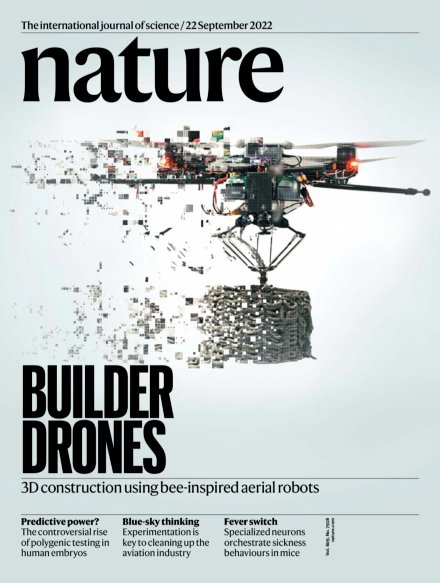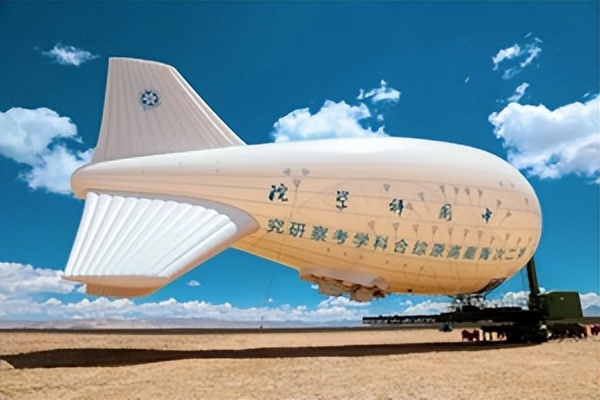"Nature" (Published 20220922) One -week thesis Guide
Author:Scientific network Time:2022.09.24
Compilation | Li Yan
Nature, 22 september 2022, volume 609 Issue 7928
"Nature" September 22, 2022, Vol. 609, issue 7928

Astronomy Astronomy
A Fast Radio Burst Source at a Complex Magnetized Site in a Barred Galaxy
A fast radio violence in the complex and strong magnetic field area of the galaxy of the rotary galaxy
Author: H. XU, J. R. Niu, P. Chen, K. J. Lee et al.
Link:
https://www.nature.com/articleS/S41586-022-05071-8
Summary:
Fast Radron Storm (FRBS) is a highly decentralized and durable radio violence. We detected the high circular polarizing pulse in more than half of the pulse samples, with a maximum of 75%of one of the pulse.
At the same time, the polarization oscillating phenomenon of frequency dependencies is also detected. All these characteristics provide evidence that there is a complex, dynamic evolving magnetized environment in the earthquake source of about one astronomical unit.
We found that its main galaxy is a galaxy of the galaxy -based galaxy and metal -rich galaxy. At the same time, the area of the region of this FRB is low, between the arms, and the distance from the center of the galaxy. This environment is inconsistent with the super -bright supernova or gamma rays caused by the extreme explosion of a large -quality star.
Abstract:
Fast radio bursts (FRBs) are highly dispersed, millisecond-duration radio bursts. We detected circular polarization in more than half of the burst sample, including one burst reaching a high fractional circular polarization of 75%. Oscillations in fractional linear and circular polarizations, as well as polarization angle as a function of wavelength, were detected. All of these features provide evidence for a complicated, dynamically evolving, magnetized immediate environment within about an astronomical unit (AU; Earth–Sun distance) of the source. Our optical observations of its Milky-Way-sized, metal-rich host galaxy show a barred spiral, with the FRB source residing in a low-stellar-density interarm region at an intermediate galactocentric distance. This environment is inconsistent with a young magnetar engine formed during an Extreme Explosion of a Massive Star That Resulted in a Long Gamma-Ray Burst or Superluminous Supernova.
Engineering Engineering Science
Aerial additive manuFacturing With Multiple Autonomous Robots
Use a variety of autonomous robots to build
Author: Ketao zhang, Pisak Chermprayong, FENG XIAO et al.
Link:
https://www.nature.com/articleS/S41586-022-04988-4
Summary:
We provide a scalable multi -robot 3D printing and path planning framework, so that the task and cluster scale of the robot can adapt to changes in printing requirements in the entire building task. The manufacturing framework of a variety of robots allows three -dimensional printing independently under manual supervision, and at the same time evaluate the printing shape and machine behavior in real time. In order to verify the independent air adjustment system based on the framework, we have developed a drone for building the material for placing materials during the flight and scanning drones used to evaluate the quality of the structure. Integrated robotics.
In addition, we will integrated the dynamic self-adjusting robot and the construction drone to further increase the manufacturing accuracy to 5 mm to meet the print geometric figures that meet the precise trajectory requirements. Composite mixture.
Here, we demonstrated the printing of concept, including a 2.05 -meter -high cylindrical body composed of a 72 -layer insulated foam material, a 0.18 -meter high cylinder composed of a 28 -layer pseudo -plastic adhesive material, a dome shape Light trace virtual printing and multi -robot simulation. Aerial-AM is allowed to be manufactured in the air, providing possibilities for future construction in dangerous areas, high-altitude or difficult to reach.
Abstract:
We present a scalable multi-robot three-dimensional (3D) printing and path-planning framework that enables robot tasks and population size to be adapted to variations in print geometry throughout a building mission. The multi-robot manufacturing framework allows for autonomous three- dimensional printing under human supervision, real-time assessment of printed geometry and robot behavioural adaptation. To validate autonomous Aerial-AM based on the framework, we develop BuilDrones for depositing materials during flight and ScanDrones for measuring the print quality, and integrate a generic real -time model-predictive-control scheme with the Aerial-AM robots. In addition, we integrate a dynamically self-aligning delta manipulator with the BuilDrone to further improve the manufacturing accuracy to five millimetres for printing geometry with precise trajectory requirements, and develop four CEMENTITIOUS -POLYMERIC Composition Mixtures Suitable for Continuous Material Deposition. We Demonstrate proof-of-concept prints including a cylinder 2.05 metres high consisting of 72 layers of a rapid-curing insulation foam material and a cylinder 0.18 metres high consisting of 28 layers of structural pseudoplastic cementitious material, a light-trail virtual print of a dome- like geometry, and multi-robot simulations. Aerial-AM allows manufacturing in-flight and offers future possibilities for building in unbounded, at-height or hard-to-access locations.化学Chemistry
ElectroreDuction of Nitrogen with Almost 100% Current-to-AMMONIA EFFICIENCY
Near 100%current-ammonia-efficiency ammonia generation
Author: Hoang-Long du, Manjunath Chatti, Rebecca Y. Hodgetts et al.
Link:
https://www.nature.com/articleS/S41586-022-05108-y
Summary:
Here, we have studied the role of electrolyte in the nitrogen reduction reaction of electrochemical lithium, and proposed a tightly-efficient and stable synthesis method for tight ion layers in the electrode-electrolyte interface area. This interface is generated by high-concentration of aminel lithium salt electrolyte, which provides a stable ammonia production rate of 150 ± 20 nmol S−1 CM−2, and the current-ammonia efficiency is close to 100%. The ion combination formed on the electrode surface suppresses the decomposition of electrolytes and supports stable nitrogen reduction. Our research emphasizes the relationship between the performance of the lithium-mediated nitrogen reaction and the physical chemical properties of the electrode-electrolyte interface. We predict that these discoveries will be developed by guiding sustainable stable and high -performance ammonia.
Abstract:
Here we investigate the role of the electrolyte in this reaction and present a high-efficiency, robust process that is enabled by compact ionic layering in the electrode–electrolyte interface region. The interface is generated by a high-concentration imide-based lithium-salt electrolyte, providing stabilized ammonia yield rates of 150 ± 20 nmol s−1cm−2 and a current-to-ammonia efficiency that is close to 100%. The ionic assembly formed at the electrode surface suppresses the electrolyte decomposition and supports stable N2 reduction. Our study highlights the interrelation between the performance of the lithium-mediated nitrogen-reduction reaction and the physicochemical properties of the electrode–electrolyte interface. We anticipate that these findings will guide the development of a robust, high-performance process for sustainable ammonia production.
Earth Science Earth Science
DIVERSE TSUNAMIGNENESIS TRIGGED BY THE HUNGA Tonga-HUNGA HA’APAI ERuption
The causes of multiple tsunami caused by the outbreak of the volcanic outbreak of the island of Tangjiahong
Author: Patrick Lynett, MAILE MCCANN, ZILI ZHOU et al.
Link:
https://www.nature.com/articleS/S41586-022-05170-6
Summary:
Here, our explosion eruption through a wave of waves generated through a variety of mechanisms, including: (1) near the volcanic outbreak, air-ocean and the original and the original and the strong shock waves radiated from the explosion; (2) the water caused by underwater eruptions The cavity collapse; (3) air-ocean-ocean and air pressure pulse stroke surrounding the earth, leading to global tsunami.
The influence of the near -field tsunami was strongly controlled by the source of the water cavity. The range of tens of centimeters can also cause catastrophic damage in ports in distant areas, which means that the moderate increase in sea planes and similar events in the future, the impact on the infrastructure is increasing.
The complex situation of such incidents has an important impact on the assessment of coastal disasters similar to the physical environment of the earth, indicating that this is a global sources of global tsunami.
Abstract:
Here we show that the explosive eruption generated waves through multiple mechanisms, including: (1) air–sea coupling with the initial and powerful shock wave radiating out from the explosion in the immediate vicinity of the eruption; (2) collapse of the water cavity created by the underwater explosion; and (3) air–sea coupling with the air-pressure pulse that circled the Earth several times, leading to a global tsunami. In the near field, tsunami impacts are strongly controlled by the water-cavity source whereas the far-field tsunami, which was unusually persistent, can be largely described by the air-pressure pulse mechanism. Catastrophic damage in some harbours in the far field was averted by just tens of centimetres, implying that a modest sea level rise combined with a future, similar event would lead to a step-function increase in impacts on infrastructure. Piecing together the complexity of this event has broad implications for coastal hazards in similar geophysical settings, su GGESTING A CURRENTTD SOURCED SOURCE of Global Tsunamis.global Tonga Tsunami Explained by Fast-Moving Atmospheric Source Source Source Source Source Source Source Source Source Source Source Source Source Source Source Source Source Source Source Source Source Source Source Source Source Source Source Source Source Source Source Source Source Source Source Source Source Source Source Source Source Source Source
The fast -moving atmospheric source explains the global tsunami caused by Tangjia volcano
Author: R. Omira, R. S. Ramalho, J. Kim, P. J. González et al.
Link:
https://www.nature.com/articleS/S41586-022-04926-4
Summary:
Here, we use the global sea level, atmosphere and satellite data, as well as numerical and analysis models to prove that the tsunami is driven by a constantly moving gas source.
In this source of gas, the sound-gravity wave caused by volcanic eruption inspired the ocean and transferred energy to the ocean through resonance. The direct connection between the tsunami and sound-gravity waves has confirmed that these phenomena are closely related.
Our model also shows that the tsunami is abnormally fast and the long duration, and its global scope, which is consistent with the air-water coupling source. This coupling mechanism has obvious dangerous meaning because it will cause higher waves on land rising from deep water waters.
Abstract:
Here we use sea-level, atmospheric and satellite data from across the globe, along with numerical and analytical models, to demonstrate that this tsunami was driven by a constantly moving source in which the acoustic-gravity waves radiating from the eruption excite the ocean and transfer energy into it by means of resonance. A direct correlation between the tsunami and the acoustic-gravity waves' arrival times confirms that these phenomena are closely linked. Our models also show that the unusually fast travel times and long duration of the tsunami, as well as its global reach, are consistent with an air–water-coupled source. This coupling mechanism has clear hazard implications, as it leads to higher waves along land masses that rise abruptly from long stretches of deep ocean waters.Surface-to-space Atmospheric Waves from Hunga Tonga -Hunga Ha'apai Eruption
The ground caused by the outbreak of the volcanic outbreak of the island of Tangjiahong-air waves
Author: Corwin J. Wright, Neil P. Hindley, M. Joan Alexander et al.
Link:
https://www.nature.com/articleS/S41586-022-05012-5
Summary:
Here, we use a comprehensive set of satellite and ground observations to quantify it from the ground to the ionization layer, showing the details of the global wave response caused by the outbreak of the Tanga volcano.
The initial explosion triggered a broad -spectrum wave. Among them, Rambo's spread on the surface was 318.2 ± 6 m s−1, and the transmission speed of the flat flow layer was 308 ± 5 ~ 319 ± 4 m s−1. The speed is 238 ± 3 ~ 269 ± 3 m s−1.
It has never been observed before the level of gravitational waves below the ionization layer, or spread from a single source to the entire earth at this speed. For more than 12 hours, the submersible heat released by Yuliu is still the most important single -gravity wave source in the world. In the satellite observation, a circular wave surface across the Pacific Basin is generated.
In the observation records, a single source of dominance is also unique. The outbreak of the Tangjia volcano has become an important natural experiment in the study of how the atmosphere reaches the changes in the sudden point source driving state, which will help improve the weather and climate model.
Abstract:
Here we show the details of this response, using a comprehensive set of satellite and ground-based observations to quantify it from surface to ionosphere. A broad spectrum of waves was triggered by the initial explosion, including Lamb waves propagating at phase speeds of 318.2 ± 6 M S−1 at Surface Level and Between 308 ± 5 to 319 ± 4 m s−1 in the stratosphere, and gravity waves propagating at 238 ± 3 to 269 ± 3 m s−1 in the stratospher. ionospheric heights have not previously been observed propagating at this speed or over the whole Earth from a single source. Latent heat release from the plume remained the most significant individual gravity wave source worldwide for more than 12 h, producing circular wavefronts visible across the Pacific basin in satellite observations. A single source dominating such a large region is also unique in the observational record. The Hunga Tonga eruption represents a key natural experiment in how the atmosphere responds to a sudden Point-Source-Driven State Change, which will be of use for improving weather and climate models. Edit | Fangyuan
Capture | Guo Gang



- END -
Honor's new machine release is the X40 series and three notebook folding screens and the system November
Earlier, digital bloggers broke the news that@此 此 will restore the rhythm of the...
Want to fly on the sky and the sun shoulder side by side?Teach you 3 ways to heaven

Want to fly to the sky, side by side with the sun ...Feitian has always been a dre...